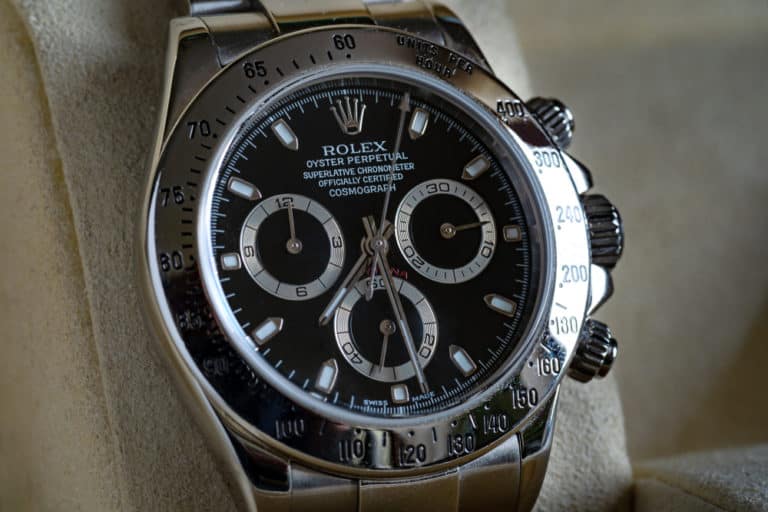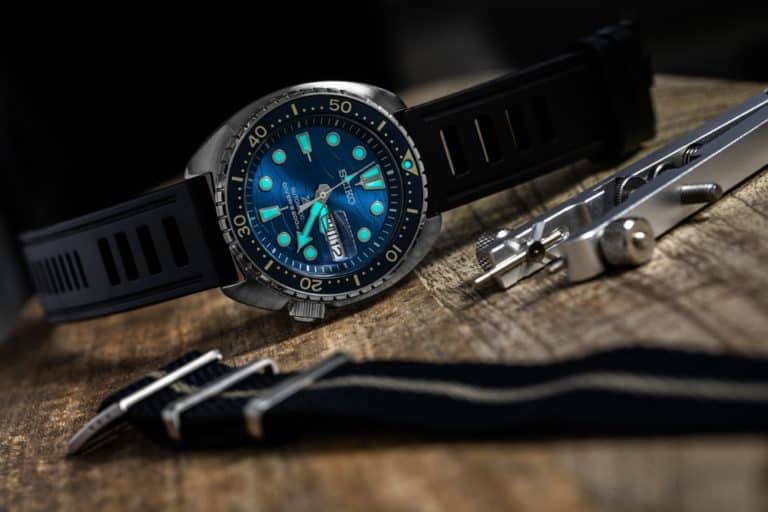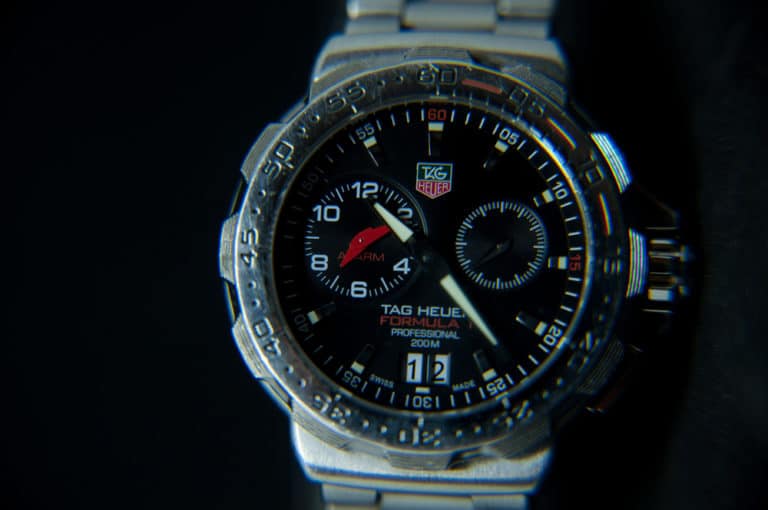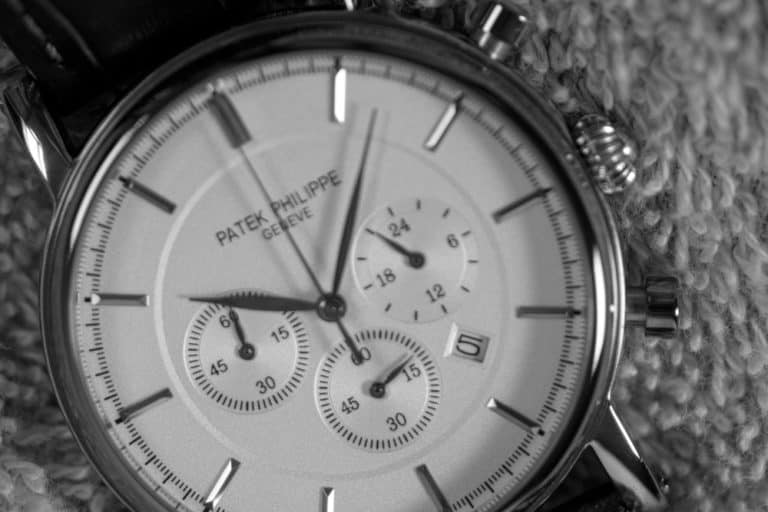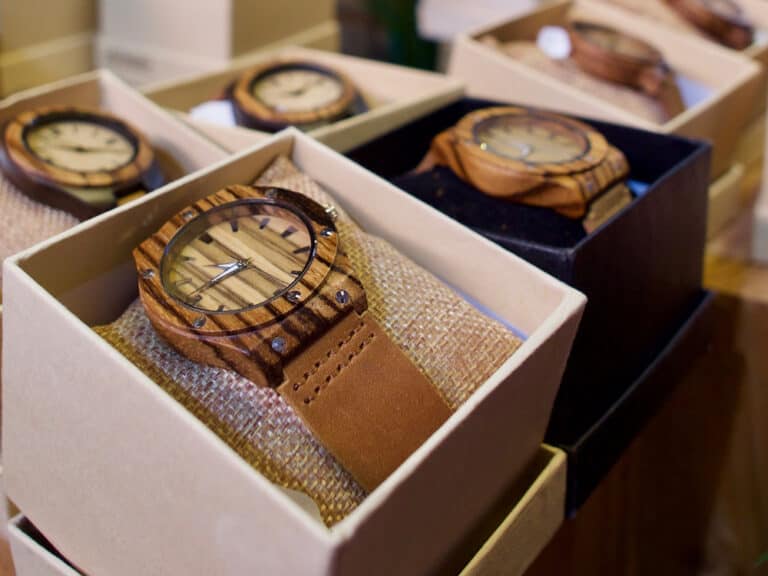Nobody can deny the value of the contribution that watch movement manufacturer ETA gave to the industry. Over almost 200 years, ETA’s own movements became the most sought-after and reliable in the industry. Sellita, though a much younger company, is one competitor that should not be ignored. So, which is better? Is ETA better than Sellita because of its history and legacy?
Many watchmakers consider Sellita to be almost as good as ETA, but most still regard ETA as slightly better. Sellita started by manufacturing movements for ETA, and it carries the same quality in its own watch movements. But ETA has the experience to back the quality of its products.
The line separating the two watch movement manufacturers is thin, and it’s becoming less solid and clear by the day. Some famous watch brands have switched from using only ETA movements to only using Sellita. Few people will truly notice the difference, and some doubt the claims of those that say they do. But let’s look at the differences between the two and see if ETA is still better than Sellita.
Are ETA And Sellita Movements Identical?
One of the first arguments people often see when researching the differences between ETA and Sellita is the opinion of less informed (but well-meaning) individuals saying that “they are exactly the same.” This is simply not true, but it’s easy to see why some would believe it is.
Sellita started off in the early 1950s as an outsourced assembler of ETA’s watch movements. ETA would send the fellow Swiss-based Sellita the necessary components, and Sellita would assemble the swiss movements and ship them to watchmakers around the world with the ETA branding. During this time, ETA and Sellita were virtually synonymous in the industry.
This all changed in 2003, though, when ETA decided to stop outsourcing the assembling and do it in-house instead. Sellita, with its business model built entirely around ETA, was facing the possibility of going out of business. The management of Sellita decided to push on with the only option available to them: manufacturing their own watch movements based on expired ETA patents.
So, the crux of the matter is that any watch manufactured before 2003 with an ETA movement was probably assembled by Sellita. Watches manufactured after 2003 are a different matter, and ETA and Sellita are entirely different entities when it comes to modern watches.
Another reason why people often get confused is that looking at Sellita and ETA movements side-by-side, the two appear to be almost identical to the untrained eye (or even slightly trained eyes). There are very few visually distinctive differences between the two, and in terms of functionality, you have to know what you’re looking for to notice any differences.
But there are differences. The question is, do those differences make ETA better than Sellita? To answer that, we will have to delve deeper.
Sellita Uses Expired ETA Patents
The fact that Sellita uses expired ETA patents means both good and bad things for Sellita, purely because of how patents work.
With its history spanning almost two whole centuries, ETA developed multiple patents for the effective functioning of watch movements. These patents cover a vast range of topics, including the best products and materials to use, different ways to make gears interact, unique coatings, etc.
But we all know that patents come and go. A company makes a new discovery and patents it, only to discover an even better way a few years later and patent that. The same has happened to ETA.
Since Sellita uses expired ETA patents, it means that Sellita manufactures its watch movements almost entirely based on the technologies and systems that ETA developed; the same technologies that kept ETA in the number one position for so many decades. This fact makes the two manufacturers and their designs very similar.
So similar, in fact, that both the ETA 2824 and the Sellita SW200 movements had precisely the same weakness that showed itself in the form of a winding issue. Once in a while, it would get stuck when you are winding up the watch. This is easy to fix, even at home, but the fact that both movements had the exact same problem shows how similar they truly are.
In terms of quality, then, Sellita’s products should be just as good as ETA’s, shouldn’t they? Well, the short and simple answer is “not necessarily.” The fact that Sellita uses expired ETA patents means that, in some cases, ETA may have developed better ways to do certain things and registered them with patents that have not yet expired and are thus unavailable to Sellita to use.
According to watchmakers, the main differences are related to skeletonization and plating of components. This could make a difference in friction, among other things, which could have long-term effects on the lifetime and reliability of watches using those movements.
But most watchmakers also agree (if they aren’t too opinionated or brand-loyal) that the two movement brands offer a similar lifetime and wear-and-tear under everyday use. The one area where ETA is still performing slightly better than Sellita has to do with abnormal use. Where watches go through extreme conditions, ETA movements seem to hold up just slightly better than Sellita.
Sellita Is Used To ETA’s Quality Standards
The Swiss are known for a number of things. This includes their neutral stance in wars, the safety of their banks, their strict privacy laws, the quality of their chocolates and ice cream, and the incredibly high standards of their watchmakers.
As one of the foremost manufacturers of Swiss watch movements, in use by most (if not all) expensive luxury watches at one time, ETA is a company that’s very much aware of the high level of quality that’s expected in the watch industry. A watch brand makes it into the upper luxury watch ranks based on its quality, and if ETA manufactures a lousy automatic movement, the brand will suffer for it.
So, by extension, it makes sense that ETA would expect the same level of quality, professionalism, and high standards of workmanship from its outsourced service providers. For one-third of the existence of ETA, Sellita was that company. Not to mention Sellita is also a Swiss company, and the only country that is possibly better known for its quality standards than Switzerland is Germany.
So, since Sellita is also based in Switzerland, where people expect only the best, and used to partner with the legendary ETA and had to conform to its standards, it’s not difficult to imagine that you can expect the same quality and standard from a Sellita movement than from one manufactured and assembled by ETA.
ETA And Sellita Use Many Of The Same Suppliers
Sellita’s success after 2003 was in no small part thanks to the fact that, by this time, Sellita had intimate knowledge of the suppliers from which ETA ordered its components. Some of the components were supplied to Sellita by ETA directly, but not all of them. Many of these components came from other manufacturers, and ETA opted to have them shipped directly to Sellita.
So it was barely an inconvenience for Sellita to contact those suppliers and order those same parts from them. Some of these were manufacturers from China and Japan. These companies were eager to do more business and seal a deal for parts that were not under existing ETA patents and could not get them into lawsuits with the Swiss corporate giant.
This fact helps Sellita offer products of the same quality as those of ETA. If you know that your components come from the same suppliers and they are manufactured to the same standards, you know that you can offer a product that competes on very much the same level.

ETA And Sellita Have Many Of The Same Customers
Since Sellita moved from being an ETA assembly plant to manufacturing its own watch movements, many famous watch brands have moved on to using Sellita movements. These include Tudor, Breitling, and Oris. Many of them use both ETA and Sellita, generally opting to use Sellita in their less expensive watches, but the fact remains that many use Sellita these days.
The result is that Sellita must compete to offer the same value as ETA or better. The possibility of losing customers is a primary motivating force in any business, a factor that drives all businesses to strive to do better, and Sellita is no exception. Having to compete with the number one watch movement manufacturer is no small feat, and the company is painfully aware of this fact.
The fact that Sellita opted to target the same customers as ETA, rather than aiming for the “cheaper” watch market by supplying its movements to Hong Kong, China, or Japan, shows that Sellita’s management knew what they were getting into and chose to conform to the same standards that ETA’s customers have come to expect.
This means there is a strong possibility that you will get the same performance and a similar lifetime from Sellita watch movements that you would from those manufactured by ETA, making them more or less equal and not necessarily meaning that ETA is better than Sellita at all.
Sellita Started Developing Its Own Designs
A company can never be respected as a true global competitor to one of the great names if all it does is copy the original. Sellita understands this, so even though it bases much of its products on expired ETA patents, the company has already started experimenting with its own improvements and implementing them.
These changes and “improvements” were off to a bumpy start. Sellita’s first few years were rough, with many of those changes leading to substandard watch performance and accuracy. It was a learning curve and an expensive one at that. Sellita got a bit of a reputation, and even some of the hardcore ETA supporters that were willing to give Sellita a chance changed their minds.
But little by little, this all improved. For one, Sellita added an additional jewel into its winding mechanism, which ETA does not have. Jewels make the operation of some sensitive components happen much more smoothly, and they also reduce the wear and tear since jewels are not as prone to friction as metal is.
The results are overwhelmingly positive. There are users who claim that the Sellita movement lasts longer without a service than the ETA movement that Sellita based theirs on. One such example is Sellita’s SW200 vs. the ETA 2824. These are the same models mentioned before, with the winding problem, but Sellita fixed the SW200 by simply adding a jewel to the mechanism.
These changes to Sellita’s designs could eventually make the difference between ETA vs Sellita. As yet, Sellita’s innovation is not yet at the level where most watchmakers say they prefer using Sellita over ETA, and the general consensus is still that ETA is slightly better. But this could change over time if Sellita keeps up the innovation and puts time and effort into its own designs.
What Do Hobbyists Say About ETA Vs. Sellita?
Watchmakers are the professionals who work in the watch industry, so their opinion is incredibly valuable. Unfortunately, it is also true that many watchmakers dislike the “new kid” simply because they are used to using ETA. They don’t use Sellita out of principle, but they often can’t give any clear reasons why.
Hobbyists are a different matter. Many hobbyists only got bitten by the bug after Sellita started doing its own thing, and they can compare apples with apples with little or no bias towards one or the other. So, what do hobbyists think? Is ETA better than Sellita?
Similar to the opinions of (open-minded) watchmakers, the general opinion among hobbyists is that ETA is still better than Sellita, but only slightly. In fact, most watch enthusiasts agree that there is so little difference that the average user will never even notice one way or another.
A few claim they get better performance and longer life between services from their watches with Sellita movements. Not even ETA enthusiasts argue with this. But, in general, most hobbyists agree (along with most watchmakers) that Sellita is approximately 99% as good as ETA when all things are considered.
Conclusion
It would appear that ETA is still slightly, very slightly, better than Sellita. This is mainly due to the fact that Sellita often reverse-engineers technologies that ETA developed in the first place. Though Sellita is constantly improving, the differences between Sellita vs ETA seem so slight that most users will never even notice if they use one or the other. The difference makes no real difference after all.
References
- https://professionalwatches.com/eta-vs-sellita/
- https://www.creationwatches.com/watchblog/automatic/are-sellita-sw200-and-eta-2824-2-the-same.html
- https://www.youtube.com/watch?v=OakfEpAAmY8
- https://www.youtube.com/watch?v=P6IauhuBhvQ
- https://www.quora.com/How-many-watch-brands-that-formerly-purchased-movement-ebauches-from-ETA-are-really-designing-and-making-their-own-movements-now
- https://www.quora.com/Are-the-watch-movements-ETA-2824-2-and-Sellita-SW200-1-identical-At-least-they-look-very-much-alike
- https://theoandharris.com/watch-101-eta-vs-sellita-movements/
- https://www.watchuseek.com/threads/i-like-sellita-better-than-eta.5262167/
- https://www.livwatches.com/blogs/stories/sellita-versus-eta-and-the-rise-of-the-underdog
- https://formexwatch.com/blogs/formex-world/eta-sellita-or-stp-whats-the-difference-/

